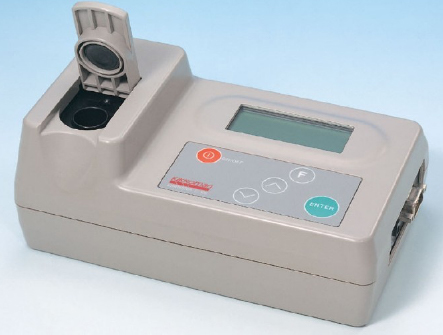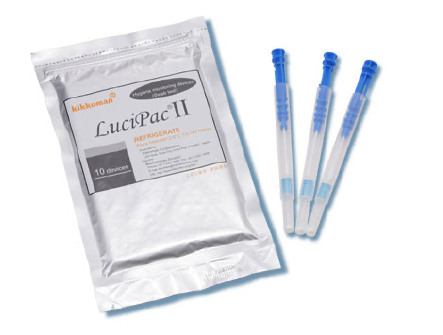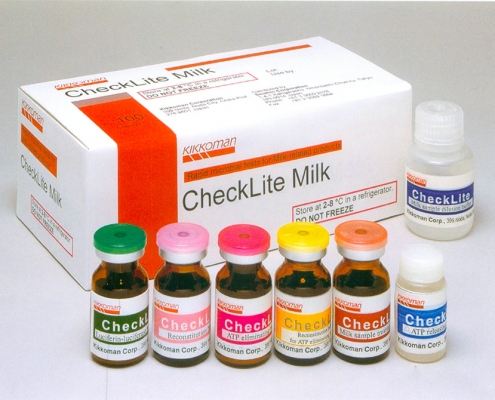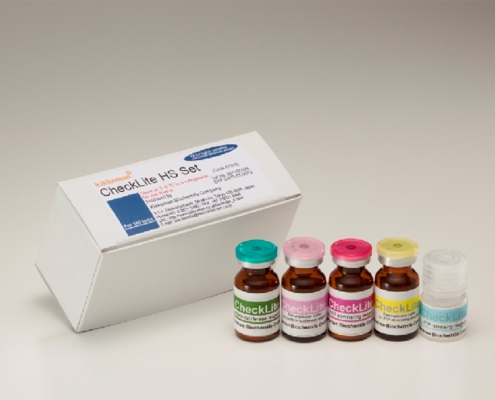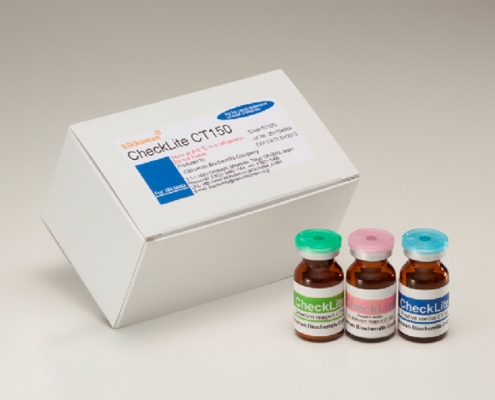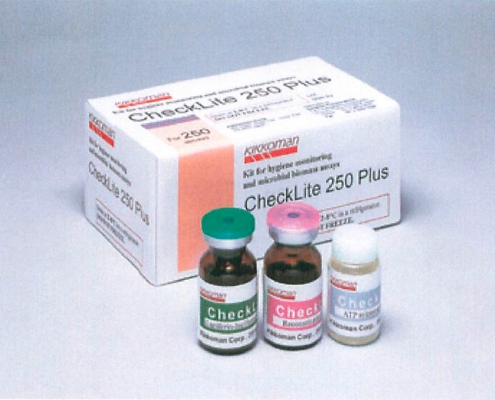Luminometer Lumitester C110 (Kikkoman Corporation (Japan))
Microorganisms in foods tend to have a bad reputation, as a cause of spoilage or even food poisoning, but these microorganisms also play an important role in creating the unique taste of “miso” bean paste and other fermented food products. Kikkoman’s Microorganism Detection Systems can measure both types of microorganisms, but in the case of food safety and environmental hygiene monitoring, the target is generally the former of these two types. Most food poisoning incidents are caused by “microorganisms”; food poisoning caused by chemical substances, such as the toxins found in blowfish or some mushrooms, account for less than 10% of the total.
This is why Microorganism Detection is often equated with food safety and environmental hygiene monitoring.
There are three main types of Microorganism Detection: Total viable cell count testing, aseptic testing, and biological indicator/pathogen testing.
Quick, easy to use, economical luminometer Lumitester C 110 (Luminescer With 110)
Main technical characteristics of the luminometer Lumitester C 110 :
– Light and compact (185х110х75 mm, weight – 700 g)
– Detection limit: 4×10-12 to 1×10-6 molecules of ATP / study
– Measurement time: 10 seconds / sample
– Save data: 1000 of the latest research in the device memory
– Monitor, RS232 interface
– Power supply: Built-in rechargeable battery or adapter
– The software, ensuring the translation of data in Excel and JPG files to your computer
Almost all food products contain microorganisms to some degree, but the volumes contained have a dramatic effect on the product’s quality and shelf life. Food processing necessarily incorporates some form of heat processing, such as boiling or baking. This also acts as a kind of “sterilization process,” sterilizing any microorganisms related to spoilage or deterioration. Total viable cell count testing checks the number of microorganisms present as a means of evaluating whether the sterilization process has been sufficiently effective, and whether raw materials being used have been produced in an environment that is free from microorganisms. (In this case, the type of microorganism is not an issue.)
In the past, total viable cell count testing required long hours of intensive labor by specialists. Kikkoman’s system measures light emissions generated by the Luciferase and the ATP contained in the microorganism using the LUMITESTER, and determines the number of bacteria based on these results. In this way, the system enables quick, objective evaluations of test results, using a fast, simple test procedure. Components offered include CheckLite 250 Plus, for measurements of total viable bacteria count; the CheckLite ATP Eliminating Kit, for eliminating extracellular ATP; the CheckLite HS Set, for high-sensitivity measurement of viable bacteria count.
Biological indicator/pathogen testing
Contamination of food products by microorganisms that cause food poisoning must be avoided at all costs. In the case of tests for coliforms> – one of the most common types of biological indicator -, it generally took a full day or more for results to be returned, and in many cases the process could be expected to take several days. Kikkoman’s Biological indicator/pathogen testing system provides reliable results in less than half this time, enabling measures to be taken quickly in the event of a food poisoning incident. In the CheckLite CT150, which is offered for the measurement of coliforms, luminescent substrate derivatives are broken down by bacteria-bearing beta-galactosidase; the luminescent substrate (luciferin) produced reacts with the luciferase to generate light, which is then measured by the Lumitester C-110 to confirm the presence of bacteria
For more information you can refer to the appropriate specification (Manual (PDF)) or our office (go to contact page)

